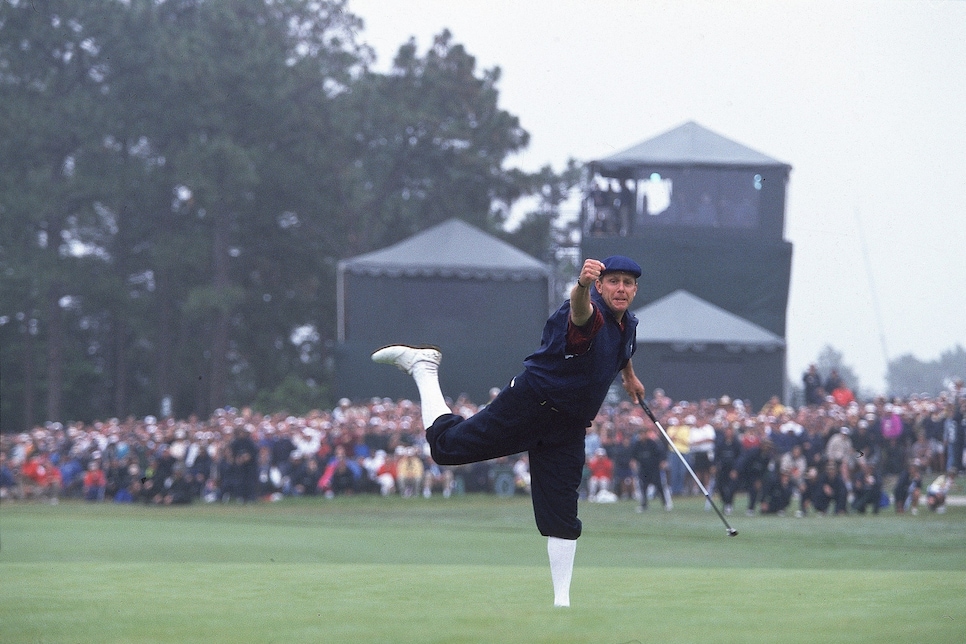local knowledge
The real Payne Stewart, 25 years later

Stephen Dunn
When a golf fan thinks of Payne Stewart, it's likely that two events come immediately to mind, in some order. The first is his uplifting triumph, at age 42, in the 1999 U.S. Open at Pinehurst. The second is his death, just a few months later, aboard a Learjet 35 airplane that eventually crashed in a wheat field in Mina, South Dakota.
The first line of Kevin Robbins' "The Last Stand of Payne Stewart" describes the latter event: "The ghost plane lost its right engine first and banked gently to the east as if preparing an approach to land." Those words, "ghost plane," are chosen with care, and signify the fact that contrary to what you might remember, or even read, Stewart did not technically die in a plane crash. He, his three guests, and the two pilots aboard the Learjet all died of hypoxia, a lack of oxygen, shortly after the plane left Orlando for Dallas. The mechanisms of what went wrong—how the cabin lost air pressure—are still unknown, but as military planes "escorted" the ghost plane over its four-hour journey into the midwest, what was abundantly clear is that nobody inside was living. The plane moved on, finally crashing when it ran out of fuel.
It was a tragic end for one of the great golfers of his generation, and also an eerie one. It also has a way of turning the story of Stewart, already remarkable, into legend, and perhaps making it harder to know the real person.

Al Tielemans
The '90s were a transformative time for Stewart, and he entered that fated decade by winning the last major of 1989, the PGA Championship. His surge on the back nine at Kemper Lakes put an end—or at least a pause—to the idea that he couldn't finish, which was a reputation that had been building since his career began. Stewart was a good-looking man of considerable personal charm, but he could also come across, as Robbins put it, as "abrasive, churlish, self-absorbed" in his worse moments. He wasn't the most popular player on Tour, and some thought his behavior at the '89 PGA, an ill-timed exuberance in the face of a collapse by Mike Reid, worsened his reputation. The '90s started out promisingly on the course, and he captured his second major at the '91 U.S. Open, but a lucrative equipment contract sent him into a slump, and he hit a low point in 1994, when poor play and wavering focus resulted in the worst year of his career.
To come back from that nadir, Stewart needed not to just battle his demons, but to find a maturity he had never needed before, at least in golf. It was the fight of a lifetime, and it yielded not only a new perspective, but his greatest professional moment yet—out-dueling both Tiger Woods and Phil Mickelson to win a legendary, grinding U.S. Open at Pinehurst.
In this week's Local Knowledge podcast, we take a close look at Stewart, his prowess and his flaws, and how everything came together in North Carolina 25 years ago in one of his last great acts.